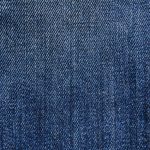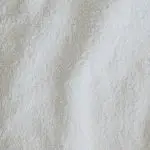When you're considering fabrics for your next project, you might find yourself weighing the benefits of terry cloth against velour. Terry cloth's absorbency makes it a go-to for towels and bathrobes, while velour's plush texture adds elegance to clothing and upholstery. However, the differences don't stop there, as each fabric brings its own set of characteristics and maintenance demands. So, how do you decide which one truly fits your needs? The answer may surprise you as we explore their unique qualities and ideal applications.
Table of Contents
Key Takeaways
- Terry cloth is highly absorbent, making it ideal for towels and bathrobes, while velour offers a plush, luxurious feel suitable for clothing and upholstery.
- Velour features a velvety surface and excellent draping quality, enhancing comfort and aesthetic appeal in garments and home decor.
- Terry cloth is more robust and maintains its shape after frequent washing, whereas velour requires careful maintenance to prevent wear and tear.
- Terry cloth is versatile for casual settings and water-related items, while velour enhances both casual and formal styles with its elegant appearance.
Overview of Terry Cloth
Terry cloth, known for its absorbent and soft texture, is a popular choice for towels and bathrobes. You'll appreciate how its unique looped design enhances its absorbency, making it ideal for drying off after a shower or wrapping yourself in comfort. This fabric is typically made from cotton, which adds to its softness and durability.
When you choose terry cloth, you're opting for a material that not only feels luxurious against your skin but is also practical. It's easy to wash and maintain, retaining its plushness even after multiple uses. You'll find that terry cloth items come in various weights; heavier options provide extra absorbency, while lighter ones are perfect for quick drying.
If you're considering terry cloth for your home, think about how it can elevate your daily routine. The fabric's versatility means it fits well in both casual and upscale settings.
Overview of Velour
Velour is a plush, soft fabric that offers a luxurious feel, making it a popular choice for clothing, upholstery, and accessories. You'll find velour in everything from stylish tracksuits to elegant drapes, thanks to its rich texture and versatility. This fabric is typically made from cotton, polyester, or a blend of both, which gives it a unique softness and durability.
When you touch velour, you can instantly appreciate its velvety surface. This quality not only adds comfort but also enhances the aesthetic appeal of any item it adorns. Velour can be used in various applications, including furniture coverings, where it provides a high-end look while being easy to maintain.
One of the notable features of velour is its ability to drape beautifully, making it an excellent choice for garments that flow elegantly. You'll often see it in evening wear and casual apparel alike. Additionally, velour is available in a wide range of colors, allowing you to express your personal style effortlessly.
Whether you're dressing up or adding a touch of luxury to your home, velour is a fabric that elevates any setting.
Key Characteristics Comparison
When comparing key characteristics, you'll notice distinct differences between terry cloth and velour that influence their suitability for various uses.
Terry cloth is highly absorbent, thanks to its looped pile structure. This makes it an excellent choice for items like towels and bathrobes, where moisture absorption is crucial. Its texture is slightly rougher, providing a tactile feel that can be both cozy and functional.
On the other hand, velour features a softer, smoother surface, giving it a luxurious appearance. This plush fabric is often used in clothing and upholstery, where aesthetics play a significant role. Velour's short, dense nap offers a refined look, but it's less absorbent than terry cloth, making it less ideal for towels.
Durability also differs between the two. Terry cloth is generally more robust, able to withstand frequent washing without losing its shape or texture. In contrast, velour can be more delicate, requiring careful maintenance to prevent wear and tear.
Ultimately, understanding these key characteristics will help you choose the right fabric based on your specific needs.
Common Uses of Terry Cloth
You'll find that terry cloth is often used in a variety of everyday items, particularly those focused on absorbency and comfort. One of the most popular applications is in bath towels. Their looped texture allows for maximum water absorption, making them perfect for drying off after a shower or swim. You might also encounter terry cloth in washcloths and bathrobes, which provide a cozy and soft feel against your skin.
Beyond the bathroom, terry cloth is frequently used in sportswear. You'll see it in headbands and wristbands, as it effectively wicks away sweat during workouts. The fabric's breathability ensures you stay comfortable while exercising.
If you have kids, you may appreciate terry cloth in baby towels and hooded bath wraps. They're gentle on delicate skin and keep little ones warm after bath time. Additionally, terry cloth is popular in beach towels, where its quick-drying properties are a bonus.
In all these instances, terry cloth stands out for its functionality and comfort, making it a go-to fabric for both household and athletic uses.
Common Uses of Velour
Soft and luxurious, velour is commonly used in clothing items like tracksuits, dresses, and loungewear, offering both comfort and style. You'll often find velour in casual attire, making it a popular choice for cozy evenings or relaxed outings. Its plush texture not only feels great against your skin but also adds a touch of elegance to everyday wear.
Velour's versatility extends beyond clothing. You might also encounter it in upholstery and home décor. From plush cushions to elegant drapes, velour can elevate your living spaces, providing a warm and inviting atmosphere. Its rich colors and soft texture make it ideal for accent pieces that stand out without overwhelming your decor.
In the realm of accessories, velour shines in items like bags, hats, and shoes. These accessories can enhance your outfit with a sophisticated flair while keeping comfort in mind.
Whether you're dressing up for an event or lounging at home, incorporating velour into your wardrobe or living space can enhance your overall experience. So, if you're looking for a plush fabric that combines style and comfort, velour may be just the perfect choice for you.
Care and Maintenance Tips
Caring for velour requires gentle handling to maintain its plush texture and vibrant appearance over time. Whether you've got a velour sofa, robe, or clothing, proper care is essential to keep it looking its best. Here are some tips to help you maintain your velour items:
- Gentle Washing: When washing velour, use a mild detergent and cold water. Hand wash or use the delicate cycle on your washing machine. Avoid bleach, as it can damage the fabric's color and texture.
- Air Dry: Instead of tossing your velour items in the dryer, let them air dry. Lay them flat on a clean surface or hang them up. This helps prevent shrinking and maintains the fabric's softness.
- Brushing: After your velour items have dried, gently brush them with a soft-bristled brush. This will help restore the nap and keep the fabric looking fluffy.
Choosing the Right Fabric
When selecting between terry cloth and velour, consider your specific needs and the intended use of the fabric.
If you're looking for something absorbent, terry cloth is your best bet. It's perfect for towels, bathrobes, and anything related to water because its looped texture efficiently traps moisture.
On the other hand, if you're after a soft, luxurious feel, velour could be the way to go. It's often used for clothing, upholstery, or blankets, giving a smooth, plush appearance.
Think about durability, too. Terry cloth tends to be more robust, making it ideal for frequent use in wet environments. Velour, while softer, may not hold up as well under heavy wear and tear.
If you're concerned about maintenance, remember that terry cloth is generally easier to care for, as it can withstand more rigorous washing without losing its shape.
Lastly, consider the aesthetic. Velour offers a more elegant look, while terry cloth leans towards a casual vibe.
In the end, weigh these factors against your personal style and functional needs to make the right choice for your project.
Frequently Asked Questions
What Is the History of Terry Cloth and Velour Fabrics?
You'll find that terry cloth originated in the 19th century as a practical fabric for towels, while velour emerged later, inspired by velvet's luxurious feel, becoming popular in the fashion industry during the 20th century.
Are There Eco-Friendly Options for Terry Cloth and Velour?
Yes, you can find eco-friendly options for both fabrics. Look for organic cotton or recycled materials in terry cloth and velour. These sustainable choices help reduce environmental impact while still offering comfort and style.
How Do Terry Cloth and Velour Impact Skin Sensitivity?
When considering skin sensitivity, you'll find terry cloth's absorbency can be soothing, while velour's softness feels luxurious. Both fabrics can be gentle, but personal preferences may dictate which one you choose for comfort.
Can Terry Cloth and Velour Be Dyed Easily?
You can dye both terry cloth and velour, but results vary. Terry cloth usually absorbs dye well, while velour might require special dyes to achieve vibrant colors. Experiment with small samples to see what works best.
What Are the Price Ranges for Terry Cloth and Velour?
When you're shopping for fabrics, terry cloth typically ranges from $5 to $15 per yard, while velour can cost between $10 and $30 per yard. Prices may vary based on quality and brand.
- Navy Herringbone Fabric: A Sophisticated Alternative to Black or Grey - June 19, 2025
- Can You Use Herringbone Fabric for Outdoor Cushions? - June 19, 2025
- How Herringbone Flannel Fabric Combines Coziness and Style - June 19, 2025







